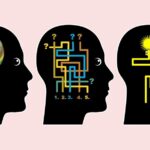Concept learning is a fundamental aspect of machine learning that focuses on enabling computers to learn general concepts from specific examples. This process allows machines to classify new, unseen data accurately, making it crucial for various applications like image recognition, natural language processing, and recommendation systems. This article will delve into the core principles of concept learning, exploring its types, importance, working mechanisms, training processes, real-world applications, common algorithms, and inherent challenges.
Understanding Concept Learning
Concept learning, in the context of machine learning, involves training a computer to identify and categorize patterns based on provided data. Essentially, it’s about teaching a machine to extract a general rule or concept from a set of observed instances. For instance, by analyzing numerous images of apples, a machine can learn the concept of “apple” and subsequently identify apples in new images. This ability to generalize from specific examples to broader concepts is a key differentiator of intelligent systems.
Types of Concept Learning
Concept learning tasks are broadly classified into two categories:
1. Supervised Concept Learning
Supervised learning provides the machine with labeled data, where each data point is associated with a predefined output or label. The algorithm learns to map inputs to outputs based on these labeled examples. A classic example is training an image classifier using a dataset of images labeled as “cat” or “dog.”
2. Unsupervised Concept Learning
Unsupervised learning involves training on unlabeled data, requiring the algorithm to discover inherent patterns and structures within the data without explicit guidance. Clustering customer purchasing behavior to identify distinct customer segments is a typical application of unsupervised concept learning.
The Importance of Concept Learning
Concept learning empowers machines to:
- Generalize Knowledge: Move beyond memorization to apply learned concepts to new situations.
- Make Predictions: Forecast outcomes based on learned patterns.
- Automate Decisions: Execute actions based on recognized concepts.
This capability is pivotal in diverse areas like:
- Image Classification: Identifying objects, scenes, and patterns in images.
- Natural Language Processing: Understanding and interpreting human language.
- Recommendation Systems: Suggesting relevant items based on user preferences.
- Fraud Detection: Identifying anomalous transactions.
How Concept Learning Works
The concept learning process generally involves:
- Learning from Examples: Analyzing data to identify recurring patterns.
- Hypothesis Formation: Developing a general rule to explain the observed patterns.
- Hypothesis Space: Exploring different possible hypotheses.
- Generalization: Applying the learned concept to new data.
- Refinement: Adapting the concept based on new information and feedback.
Training a Concept Learning Model
Training a concept learning model typically involves:
- Data Collection: Gathering relevant and representative data.
- Data Preprocessing: Cleaning and preparing the data for training.
- Model Selection: Choosing an appropriate learning algorithm.
- Model Training: Feeding the data to the algorithm to learn the concept.
- Model Evaluation: Assessing the model’s performance.
Concept Learning Algorithms: Find-S and List-Then-Eliminate
Two fundamental concept learning algorithms are:
1. Find-S Algorithm:
Find-S aims to identify the most specific hypothesis consistent with positive training examples. It iteratively refines the hypothesis based on new positive examples.
2. List-Then-Eliminate Algorithm:
This algorithm starts with all possible hypotheses and eliminates those inconsistent with the training data.
Challenges and Limitations
Concept learning faces challenges such as:
- Overfitting: The model learns the training data too well, including noise, hindering generalization.
- Underfitting: The model is too simple to capture the underlying concept effectively.
- Data Quality: Inaccurate, incomplete, or biased data can lead to flawed learning.
- Complexity: A vast hypothesis space can make finding the optimal hypothesis challenging.
Conclusion
Concept learning is a cornerstone of machine learning, enabling machines to learn and apply general concepts from data. While challenges exist, ongoing advancements continue to refine concept learning techniques, pushing the boundaries of artificial intelligence and its applications across diverse fields. Understanding “What Is Concept Learning” is fundamental to grasping the power and potential of machine learning.
